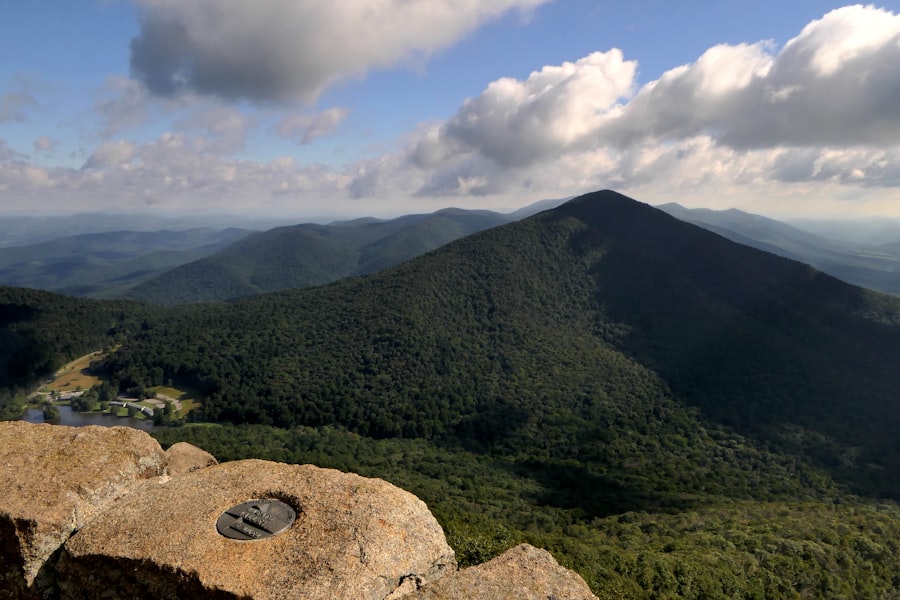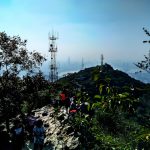Download links
How to install Banaue Rice Terraces: A Marvel of Agricultural Ingenuity APK?
1. Tap the downloaded Banaue Rice Terraces: A Marvel of Agricultural Ingenuity APK file.
2. Touch install.
3. Follow the steps on the screen.
Description
The Banaue Rice Terraces, often referred to as the “Eighth Wonder of the World,” are a remarkable feat of engineering and agriculture that date back over 2,000 years. These terraces were carved into the mountains of Ifugao Province in the Philippines by the indigenous Ifugao people, who developed sophisticated agricultural techniques to cultivate rice in a challenging mountainous environment. The terraces are not merely agricultural fields; they represent a deep connection between the Ifugao culture and their natural surroundings.
Historical accounts suggest that the construction of these terraces began around 2000 B.C., although some estimates place their origins even earlier. This long history reflects the resilience and ingenuity of the Ifugao people, who adapted to their environment and created a sustainable agricultural system that has endured for centuries. The terraces are not just a product of labor; they embody a rich cultural heritage that has been passed down through generations.
The Ifugao people have maintained their traditional practices, including rituals and ceremonies that honor the spirits of the land and ancestors. The terraces are intricately linked to their social structure, with communal efforts required for their maintenance and cultivation. Over time, these rice terraces have become a symbol of Ifugao identity, representing not only agricultural prowess but also a way of life that emphasizes harmony with nature.
The terraces have been recognized by UNESCO as a World Heritage Site, underscoring their global significance and the need for their preservation.
Key Takeaways
- The Banaue Rice Terraces were built over 2,000 years ago by the Ifugao people, making them a UNESCO World Heritage site and a testament to ancient engineering and agricultural practices.
- The terraces were constructed using stone and mud walls to create flat platforms on the steep mountainsides, showcasing the ingenuity and skill of the Ifugao people.
- The terraces are not only a source of livelihood for the Ifugao people, but also hold deep cultural and spiritual significance, representing their connection to the land and their ancestors.
- The terraces have had a positive environmental impact, as they have helped to preserve the region’s biodiversity and prevent soil erosion.
- Despite their historical and cultural significance, the Banaue Rice Terraces face challenges such as modernization, population decline, and the effects of climate change, threatening their preservation.
- The terraces have become a major tourist attraction, bringing economic opportunities to the region, but also raising concerns about the impact of tourism on the preservation of the terraces and the local culture.
The Engineering and Construction of the Terraces
The engineering behind the Banaue Rice Terraces is a testament to the advanced knowledge and skills of the Ifugao people. The construction of these terraces involved meticulous planning and execution, utilizing local materials such as stone, wood, and soil. The terraces were built in a series of steps that follow the contours of the mountains, allowing for effective water management and minimizing soil erosion.
The Ifugao utilized a system of irrigation that diverted water from nearby rivers and streams, channeling it through a network of bamboo pipes and dikes to ensure that each terrace received adequate moisture. This intricate system not only maximized agricultural output but also demonstrated an understanding of hydrology that is impressive even by modern standards. The construction process itself was labor-intensive and required a deep understanding of the landscape.
Workers would clear the land, build retaining walls, and create flat surfaces for planting rice. The terraces vary in size and shape, with some reaching heights of up to 1,500 meters above sea level. The design of the terraces allows for efficient drainage while preventing water from pooling, which could lead to crop failure.
This engineering marvel is not just about aesthetics; it is a functional system that has sustained generations of Ifugao farmers. The knowledge embedded in this construction process has been passed down orally, showcasing the importance of tradition in maintaining these agricultural practices.
The Cultural Significance of the Terraces to the Ifugao People

The Banaue Rice Terraces hold profound cultural significance for the Ifugao people, serving as more than just agricultural fields; they are integral to their identity and way of life. The terraces are deeply intertwined with Ifugao cosmology, where rice is not merely a staple food but also a symbol of life and prosperity. Rituals surrounding rice planting and harvesting are central to Ifugao culture, often involving elaborate ceremonies that invoke ancestral spirits and seek blessings for a bountiful harvest.
These practices reflect a worldview that emphasizes respect for nature and the interconnectedness of all living things. Moreover, the terraces are a source of community cohesion among the Ifugao people. The construction and maintenance of the terraces require collective effort, fostering social bonds and reinforcing cultural values such as cooperation and mutual support.
Traditional practices related to rice cultivation are often accompanied by communal gatherings, where stories are shared, songs are sung, and cultural heritage is celebrated. This communal aspect is vital in preserving Ifugao traditions in an increasingly modern world. As younger generations face pressures from urbanization and globalization, the terraces serve as a reminder of their roots and cultural heritage, encouraging them to engage with their ancestral practices.
The Environmental Impact of the Terraces
| Aspect | Metric |
|---|---|
| Water Usage | Amount of water used for irrigation |
| Soil Erosion | Rate of soil erosion prevented by terraces |
| Biodiversity | Number of plant and animal species supported |
| Carbon Sequestration | Amount of carbon stored in terrace vegetation |
The environmental impact of the Banaue Rice Terraces is multifaceted, showcasing both positive contributions to biodiversity and challenges posed by modern pressures. On one hand, the terraces have created unique microenvironments that support diverse flora and fauna. The careful management of water resources has led to rich ecosystems within the terraced landscapes, where various species thrive alongside cultivated rice.
This biodiversity is crucial for maintaining ecological balance and resilience against pests and diseases that could threaten crops. However, the environmental sustainability of the terraces is increasingly at risk due to climate change and human activities. Changes in weather patterns have led to unpredictable rainfall, affecting irrigation systems that have functioned effectively for centuries.
As these environmental pressures mount, there is an urgent need for sustainable practices that honor traditional knowledge while adapting to contemporary challenges.
The Challenges Facing the Preservation of the Terraces
Preserving the Banaue Rice Terraces presents numerous challenges that require concerted efforts from local communities, government agencies, and international organizations. One major challenge is the decline in traditional farming practices as younger generations migrate to urban areas in search of better opportunities. This exodus has resulted in abandoned terraces that fall into disrepair, leading to further erosion and loss of agricultural productivity.
Without active participation from local farmers, the knowledge required to maintain these terraces risks being lost. Additionally, external pressures such as tourism development pose significant threats to the preservation efforts. While tourism can provide economic benefits to local communities, it can also lead to environmental degradation if not managed sustainably.
Increased foot traffic can cause soil compaction and erosion, while infrastructure development may disrupt traditional land use patterns. Balancing economic growth with cultural preservation is a delicate task that requires careful planning and community involvement to ensure that both heritage and livelihoods are protected.
The Tourism and Economic Impact of the Banaue Rice Terraces

Tourism has become an essential component of the economy surrounding the Banaue Rice Terraces, attracting visitors from around the globe who come to marvel at this UNESCO World Heritage Site. The influx of tourists provides much-needed income for local communities through various avenues such as guided tours, handicraft sales, and hospitality services. Local businesses have flourished as visitors seek authentic experiences that connect them with Ifugao culture and traditions.
This economic boost can help fund preservation efforts for the terraces themselves, creating a symbiotic relationship between tourism and cultural heritage. However, this economic reliance on tourism also brings challenges that must be addressed to ensure sustainable development. Overcrowding during peak seasons can strain local resources and infrastructure, leading to environmental degradation if not managed properly.
Moreover, there is a risk that commercialization may dilute traditional practices as communities adapt to meet tourist expectations rather than preserving their authentic cultural expressions. To mitigate these risks, it is crucial for stakeholders to implement sustainable tourism practices that prioritize environmental conservation while respecting local customs and traditions. By fostering responsible tourism initiatives, it is possible to create an economic model that supports both community livelihoods and the preservation of this extraordinary cultural landscape for future generations.
If you’re interested in exploring more popular destinations like the Banaue Rice Terraces, you may want to check out this article on the most-viewed apps on Olxtoto. This list could provide you with some great recommendations for travel apps to enhance your next adventure.
FAQs
What are the Banaue Rice Terraces?
The Banaue Rice Terraces are ancient terraces carved into the mountains of Ifugao in the Philippines. They are often referred to as the “Eighth Wonder of the World” and are a UNESCO World Heritage Site.
How were the Banaue Rice Terraces created?
The terraces were hand-carved over 2,000 years ago by the Ifugao people using minimal equipment, mostly by hand. The terraces were created to make the mountainous terrain suitable for rice cultivation.
What is the significance of the Banaue Rice Terraces?
The Banaue Rice Terraces are not only a stunning example of ancient engineering and agricultural practices, but they also hold cultural and historical significance for the Ifugao people. They are a symbol of their rich heritage and traditions.
Can visitors explore the Banaue Rice Terraces?
Yes, visitors are welcome to explore the Banaue Rice Terraces. There are hiking trails and viewpoints that offer breathtaking vistas of the terraces and the surrounding mountains. It is important to respect the local customs and environment while visiting.
How can I get to the Banaue Rice Terraces?
The Banaue Rice Terraces are located in the Ifugao province of the Philippines. The most common way to reach the terraces is by taking a bus or private vehicle from Manila to Banaue. From Banaue, visitors can arrange for guided tours or hike to the terraces.





